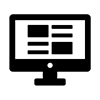“What is the best whiteboard eraser?” is a question that comes up frequently, and the answer is simple. Use the correct eraser for the size, format and type of ink used.
Watch our video below to discover our findings.
Whoa, take a step back. Can we just say, “use the right one” and walk away at Show-me?
Well, no we can’t.
With so many different options available through [almost] all imaginable suppliers, it’s easy to see why so many are unsure what the best eraser is to use and when they should use it.
Does everyone have the access to a wide range of suitable erasers? And are people happy to try various materials and risk damaging their whiteboards?
So, we asked ourselves “Could we test out a range of materials on behalf of the whiteboard-using population?”
Yes, we could, and we have.
Now, be prepared, this is quite a long article; the Show-me Lab loves a research task they can sink their teeth into. You may want to grab a cup of tea, or, if you prefer, watch the video summary above.
Background
Rather than looking at products that are currently on the market, we looked at materials instead, so we could investigate which surface gives the best results.
For this, we took inspiration from and included readily available products, but also what would you have to hand when you need to correct a drywipe mistake.
How Many Materials?
We looked at 42, yes 42, different materials and various formats. With the help of a microscope, we have been able to test and see the difference between each surface used.
Fair Testing
To keep the results as fair as possible we used a new mini-whiteboard and drywipe marker for each test.
Across the testing we looked at eight categories:
- Felt
- Foam
- Tissue
- Cloth
- Microfibre
- Sponge
- Clothes
- Skin
We included the last two as if you’re in a school, you’re likely to have used them as a quick whiteboard eraser. Although, we’ve all probably used our fingers to correct a mistake on the whiteboard without even thinking about it.
In each category where we could get different formats, grades and textures, we added these to the test, so some categories had more options tested.
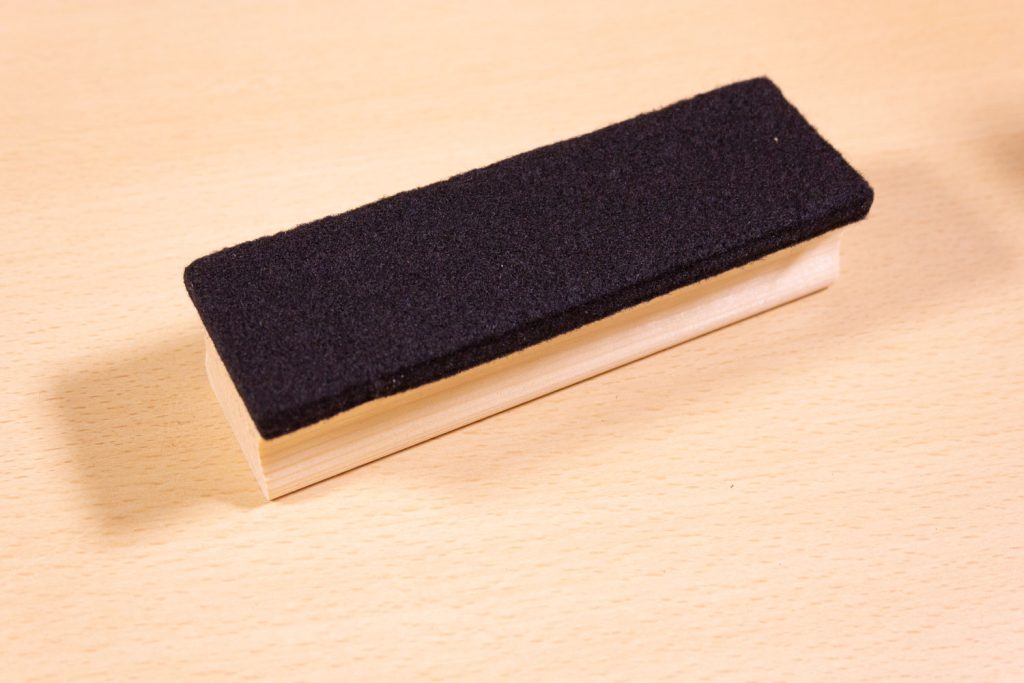
The Results: FELT
Felt was by far the most commonly used eraser.
As felt erasers were originally used on blackboards, most offices or classrooms that transitioned from one to using whiteboards still had an eraser lying around that could be used.
When we looked at the surface of felt, we were shocked by what we saw. The fibres look like a bundle of wire and are not too dissimilar to wire wool.
This knowledge and the view of the mini-whiteboard surface under the microscope confirmed that felt is actually abrasive.
Now, this is slightly misleading as the relative abrasion of the felt is quite mild, even on flexible plastic whiteboards, but there are signs of micro-scratches even after the first use.
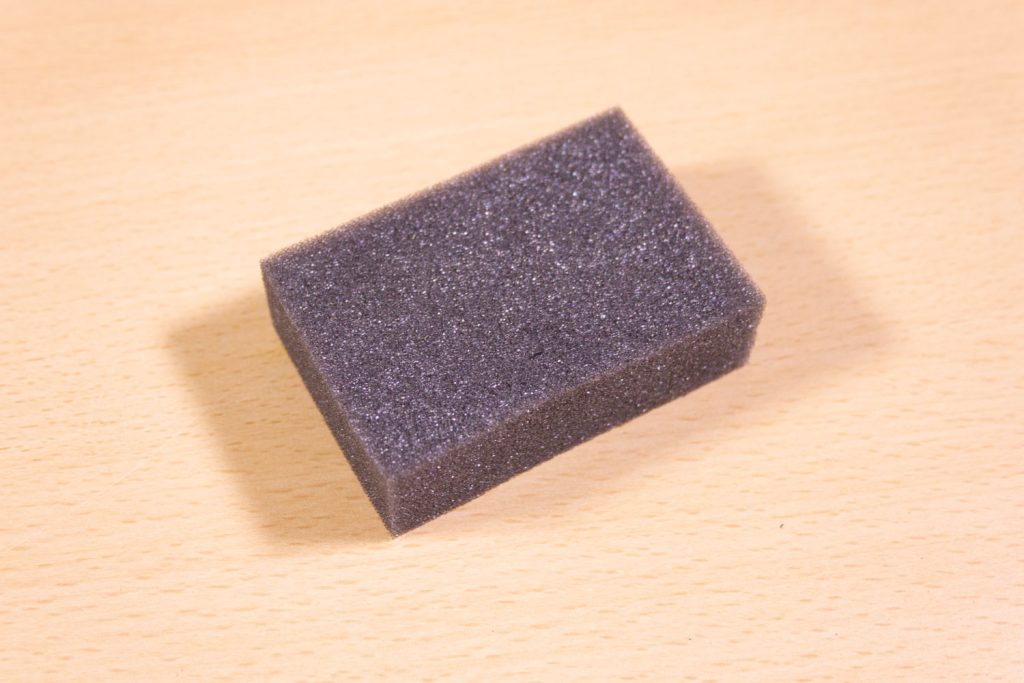
The Results: FOAM
Foam (the soft expanded foam blocks rather than the squirty cream style) appears to be the second most commonly used material.
This option comes in a few different styles; the grade of foam and the shape make a slight difference to the performance. They typically fall into the Mini Foam Eraser category and leave the larger sizes to felt.
The surface of foam tends to be like the bubbles on the surface of water, in varying sizes, with some open cells that can pick up the drywipe ink ‘dust’. However, more often than not, the foam is a closed cell which acts more like a brush that sweeps the ‘dust’ off the surface.
This lack of ‘pick-up’ keeps the mini foam erasers clean for longer and means they do not need to be maintained, just looked after.
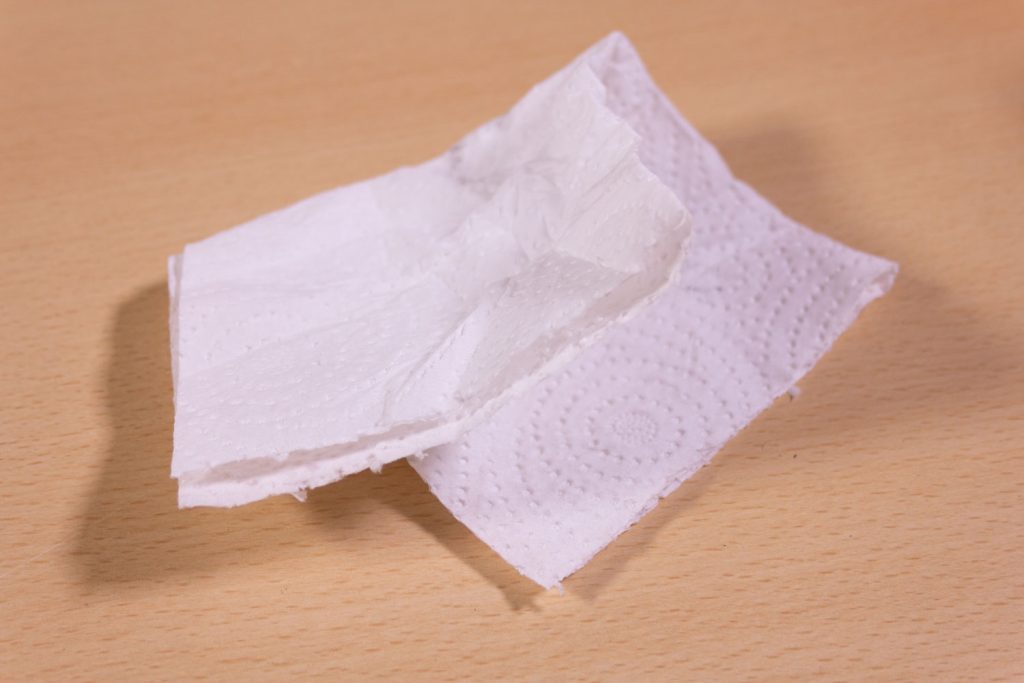
The Results: TISSUE
Tissue can take many forms, but more commonly will be ‘kitchen roll’ or ‘paper towels’ as these are readily available and very cheap.
But sometimes that can come at a cost to your whiteboards.
In most cases, the surface of a tissue is rough. This is because its primary function is to absorb liquid and scrub the surface clean; whether that be your hands or the worktop.
Ultimately the tissue is not the issue. The application of it for erasing drywipe ink from a mini-whiteboard is, as it can add scratches to the surface and cause long-term damage.
When you use tissues on a large, typically wall-mounted, whiteboard, the surface is rigid. The coatings are very robust and not as easily prone to scratching in the same way, so you will be able to get away with using tissues almost indefinitely without issue.
Would you use a tissue to wipe the paintwork of your car? Probably not, as you wouldn’t want to risk potentially scratching the paintwork. Well, the surface of a whiteboard is a similar material.
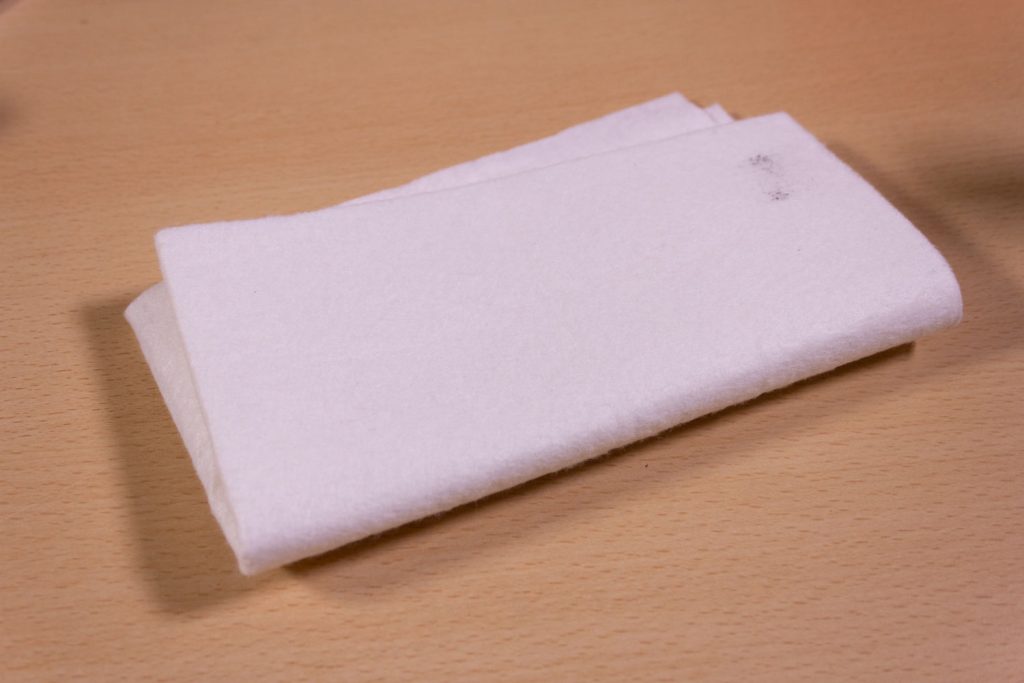
The Results: CLOTH
Cloth, much like tissue, is designed with cleaning in mind. Some are single-use, some are multiple-use, and some are long-term use. The differences are down to what you’re cleaning and who’s using it.
A high-quality, super-absorbent paper-based cloth can be all of the above, from the very wasteful ‘use and throw away’, to the ‘use a few times over a few days and throw away’, or even up to ‘use it for weeks before disposing of’.
We can take a low-quality cotton cloth and use it once, multiple times and even wash it and keep using it and still get a good cloth.
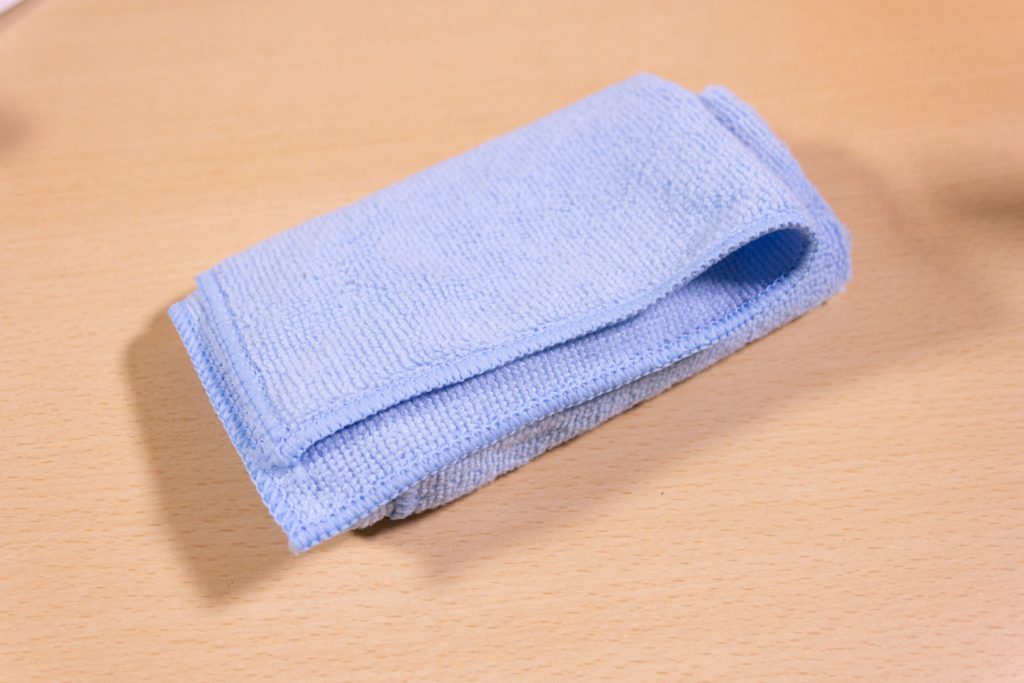
The Results: MICROFIBRE
Microfibre is the biggest buzzword product to hit cleaning in the last 10 years. It is seen as a miracle cloth with all the absorbency of multiple cotton cloths and eco-creds to fulfil everyone’s needs, but is it really that good for drywipe ink use?
We think it is both the best and worst option.
If we take a brand new microfibre cloth and use it for drywipe ink, it will effortlessly remove the ink and buff the surface at the same time, at the expense of the cloth. You will see that the microfibre has now changed colour to match the ink that has been removed.
It doesn’t take that long, even with a large microfibre cloth, to make the surface very dirty. It’s almost the worst kind of dirty, as it is typically drywipe ink dust stuck to the surface. And, when re-wetted, the drywipe ink dust will transfer the ink back to the surface.
For microfibre cloths to be used well with drywipe ink you would need to use the clean sections, keeping it away from liquids. Then, as the cloth is no longer the original colour, make sure that it is washed properly before use again. See our other post on how to care for microfibre cloths >>
The best and worst part of microfibre cloths is that the fibres pick up the dust through interaction and static and hold onto them, keeping the particles away from the surface. But the cloth gets dirty quickly and requires frequent cleaning to maintain.
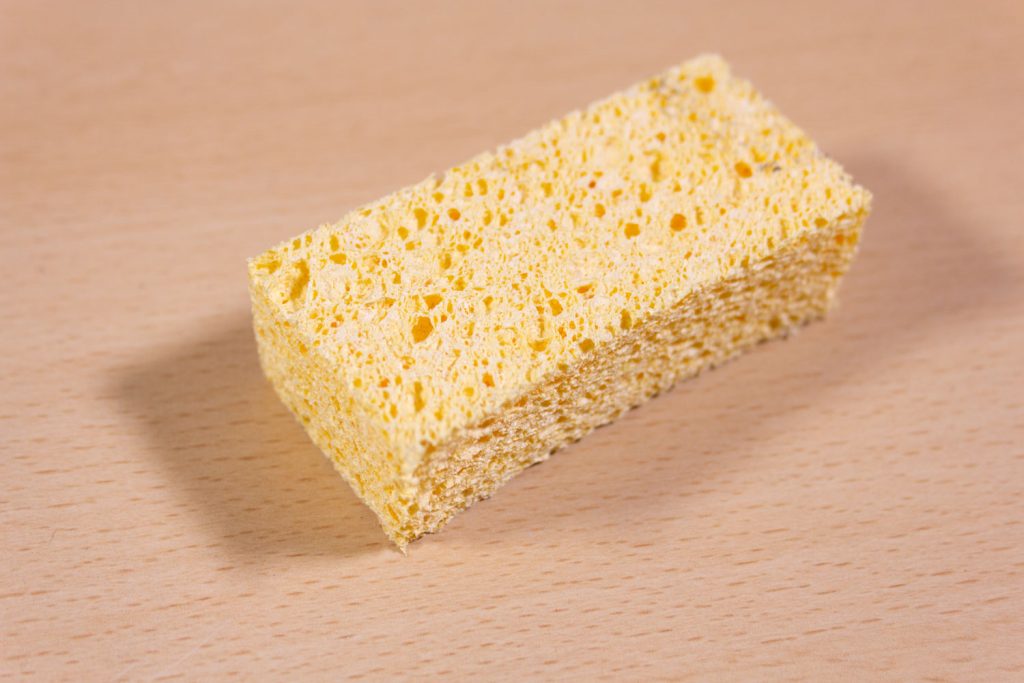
The Results: SPONGE
Sponge as a category could be used for many different products. For this purpose, we are referring to cellulose sponge blocks.
These blocks are a great eraser for drywipe ink as they combine a liquid cleaner with an open cell structure that helps to shift and pick up the dust and clean the surface, however…
Cellulose sponges have to be kept moist.
Much like the tip of drywipe markers that have dried up, the fibres of the sponge are very abrasive and will damage the board surface. So, as long as you keep your sponges wet or have a spray bottle of water to hand, the best part of this is void.
Additionally, the moisture of the sponge does leave a slight wetness on the board surface that could affect the usability of the whiteboard afterwards.
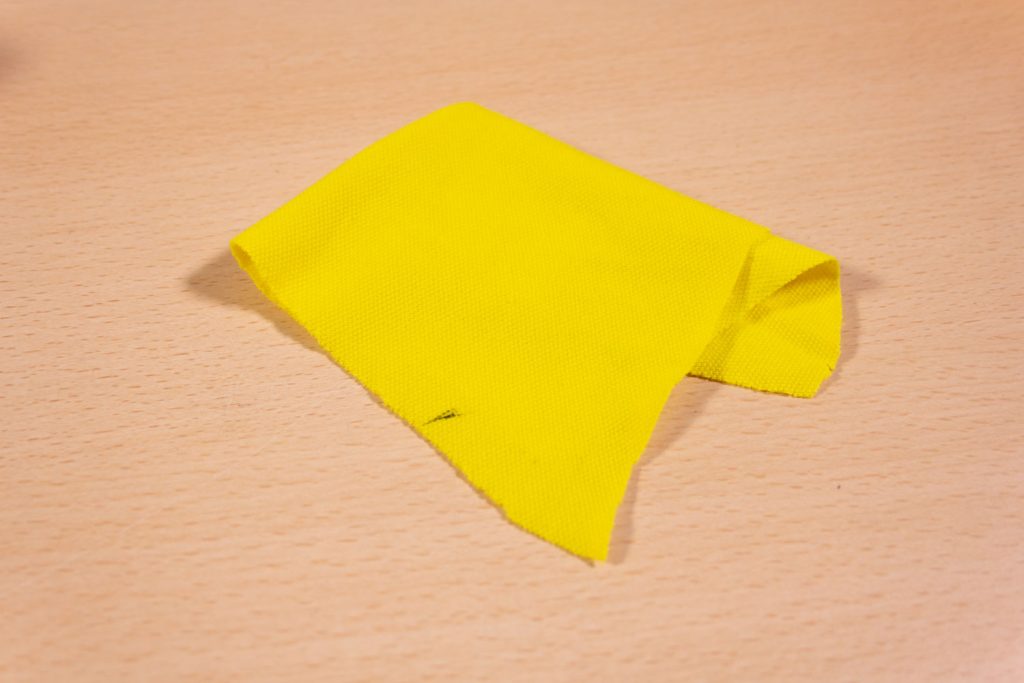
The Results: CLOTHES
Clothes would not be part of our typical eraser testing research, but once you have been into a school or had a child come home with mucky cuffs you can easily see why we’re looking at this as a possible category.
If you want an eraser that is close to hand, literally, and is always there without having to be picked up then your clothing is perfect for removing drywipe ink.
The materials used in a lot of clothing will not adversely damage a mini-whiteboard surface. Obviously, if your cuffs have buttons, cufflinks, sequins or other small embellishments then these will damage the board surface. But, these aside, the effects are minor and a sleeve will work well.
We looked at standard school shirts as well as polo shirts, jumpers, skirts, and trousers to ensure that the surface is soft enough for use and does pick up the ink.
NOW, with that said, please do not use your clothes to remove drywipe ink.
If the ink was fully dry before being removed your clothes will hardly know it’s happened and can be washed out in a normal wash cycle.
We can’t vouch for all brands’ drywipe inks, but we certainly know with Show-me drywipe markers.
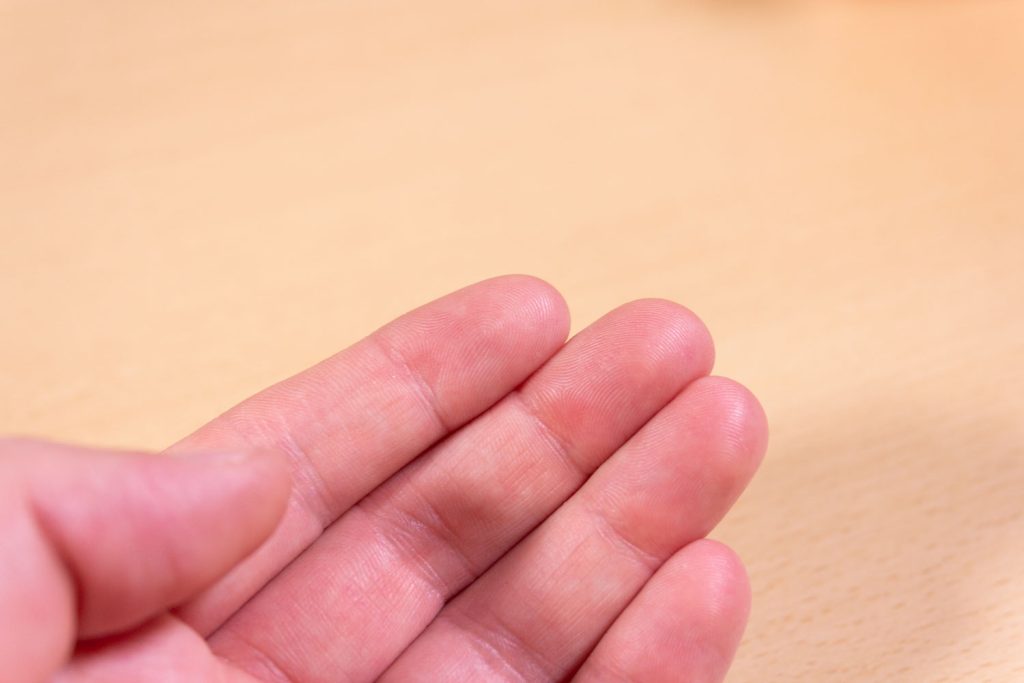
The Results: SKIN
Skin is something even closer to hand than sleeves and cuffs. Through many years of using whiteboards, I personally can testify to the fact that people very often use fingers and the side of their hands to remove ink when they make a mistake and need to erase it instantly.
Is skin any good? No, but mainly because the ink is still wet and almost always smudges
Does it damage the surface of the whiteboard? No, but it does leave a slight residue from our natural oils.
Will it affect your skin? No, but depends on your specific skin conditions, so it’s probably best to avoid.
Summary of Findings
So, what is the best drywipe eraser?
We believe that the most efficient and effective eraser for removing dry drywipe ink from the surface of a whiteboard surface in most cases is…
The mini foam eraser is one of the most inexpensive options. Mini foam erasers:
- Don’t damage the board surface
- Don’t get really dirty
- Don’t need regular maintenance
As with any product, you do need to look after foam erasers. They can, when compressed for long periods of time, deform and work less effectively. And they’re not suitable for use with a liquid whiteboard cleaner.
However, we found that they are the best option for cleaning your whiteboards.

